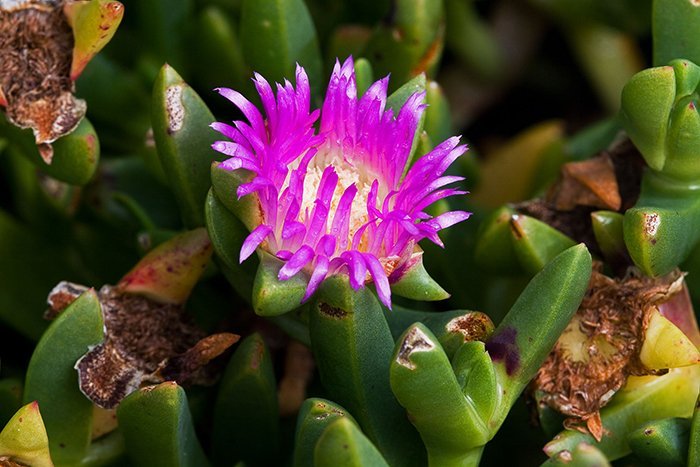Seabird poo has some island tree species “addicted”

THE PISONIA tree (Pisonia grandis), found on coral cays, has a good thing going with seabirds. It offers horizontal branches for noddies, terns and boobies to nest on, and gains their droppings as fertiliser. Pisonias are so ‘addicted’ to bird wastes that whole groves may die if seabirds vacate an island for good. The trees are ornithocoprophiles, plants that require bird droppings to fuel their growth.

A flower of the Pisonia tree. (Image Credit: Kim Starr/Wikimedia)
In South Australia, many years ago, I swam out to a limestone isle near Beachport that had leafy peppercresses (Lepidium foliosum) growing among the nests of little penguins and gulls. Few people ever get to see this drab little plant because it keeps almost entirely to seabird islands in southern Australia. Its tiny seeds must travel between isles by sticking to gulls. That outcrop was less than 50 metres from the mainland, but I could find no trace of peppercresses back there, even though the landscape looked the same. What was missing was soil soiled by seabirds.
Cook’s tussock grass (Poa cookii), found on subantarctic islands, including Macquarie Island, is another plant bound to seabird islands. There are also plants that don’t depend on seabirds, but do especially well in the soil they fertilise, including pigfaces (Disphyma crassifolium and Carpobrotus species) and bower spinach (Tetragonia implexicoma). These soft plants often take over from brittle shrubs that can’t cope with seabirds pushing past them and polluting the soil.
Antarctica has mosses and lichens that count as ornithocoprophiles. When I wandered around Casey Station it was obvious that lichens were doing best on rocks close to penguin roosts. Where I saw penguins I found lichens, and where I didn’t I didn’t.

Carpobrotus. (Image Credit: JJ Harrison/Wikimedia)
Pisonia trees gain more from birds than just fertiliser. The seeds they produce are covered in extremely sticky resin, and birds that brush against them often end up carrying the seeds between islands. Unfortunately, many birds starve and die cruel deaths when their wings become burdened by an excess of seeds. On some islands, when the pisonia trees bear heavily, hundreds of birds can be killed in a season, only to end up becoming fertiliser for the trees themselves.




